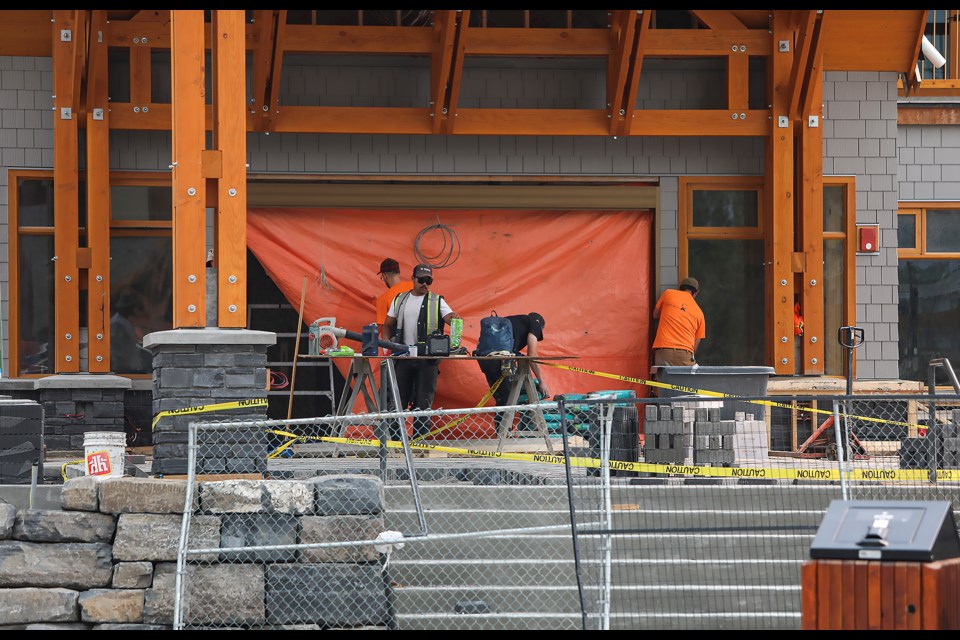BANFF – A new name, new business cards and a fresh rebrand, but the same goal will be in mind for planning issues handled by the Town of Banff.
As part of the municipality’s evolving role in addressing environmental issues, the Town of Banff formally changed the name of its planning department to planning and environment.
The name change, which took place earlier this summer, is designed to better reflect the changing and evolving importance of environmental issues in the mountain community.
“Over time, the functional areas of our department have changed. … In the early 1990s, when we became a Town, we were kind of uncertain around what role municipalities played in environmental stewardship,” said Darren Enns, the director of planning and environment for the Town.
The name change is the first since the incorporation agreement came into effect in 1990. Enns said it’s been a gradual shift in the importance of environmental needs in the community, but one residents and council have made a priority.
“When you look at the incorporation agreement, Parks Canada quite understandably maintained many environmental authorities in the incorporation agreement,” he said. “This isn’t a surprise being a national park community. … My perspective is that as a national park community, our residents and elected officials have a really intense sense of pride in being environmental stewards, so I think this is where, for our council, this is evident in their growing focus over time on environmental policy and initiatives.”
The four pillars of Banff council’s 2023-26 strategic plan are addressing affordability and livability, climate action goals, improving sustainable transit and building relationships and partnerships.
The Town has been aggressive in environmental initiatives, having recently updated its Zero Waste Action Plan that aims to divert 70 per cent of its waste by 2028 as well as supporting mode shift efforts away from personal vehicles, offering rebates and incentives for solar projects and approving the Environmental Master Plan in 2019.
“I think it’s important to recognize that and we’re working incredibly hard on areas of waste and energy right now,” Enns said.
The multi-faceted department handles key planning matters such as building and development permits, but also ongoing work with the Banff Avenue pedestrian zone, the work done on Bear Street, community art, building inspections, business licensing and heritage planning. Work on the Heritage Resource Action Plan is ongoing and expected to be presented to council this year.
“It’s not just one area, but is actually a bit of a range. We tend to be more of a generalist department,” Enns said of the department that has between 10-12 staff, depending on the time of year.
Planning in Banff is unique compared to other municipalities in the country. While they have municipal and provincial policies to follow, federal legislation also has to be ensured with the mountain town as one of the few communities in a national park.
Banff is the lone community in a national park with authority over specific planning and development, but the Town of Jasper has ongoing consultation for potentially getting some level of autonomy.
The Town has its Banff Community Plan, which has work ongoing and was last completed in 2008, as well as the Banff National Park management plan that is ultimately approved in parliament.
The Banff Community Plan is in its public engagement phase of working with residents and organizations to fine-tune what is ultimately the guiding document for policy direction for the next 30 years. It serves as the Municipal Development Plan and is the statutory plan for the municipality under both the Municipal Government Act and Banff’s incorporation agreement.
Among the main topics are environmental stewardship, transportation and housing.
Work on the community plan is being led by former long-time head of the planning department Randall McKay.
Banff also has a strict commercial cap that is set at 361,390 square metres, which is outlined in the Canada National Parks Act. It means rather than new development taking place like it does in other Albertan communities, land is redeveloped with an emphasis often placed on densification.
The Banff management plan emphasizes commercial growth has to conform with the approved community plan, is within approved commercial zones and can’t exceed the maximum permitted floor area in the national parks act.
The train station lands and the ongoing work at the former Inns of Banff site along Banff Avenue are the remaining commercial sites to be developed.
“As commercial growth culminates, it’s going to shift our focus to other areas such as residential development, commercial intensification as well as addressing planning issues that come from growing day visitation,” Enns said. “That planning role will shift and the idea of rebranding isn’t intended to diminish that, it’s meant to note that less focus on community development and focus on other areas.”




